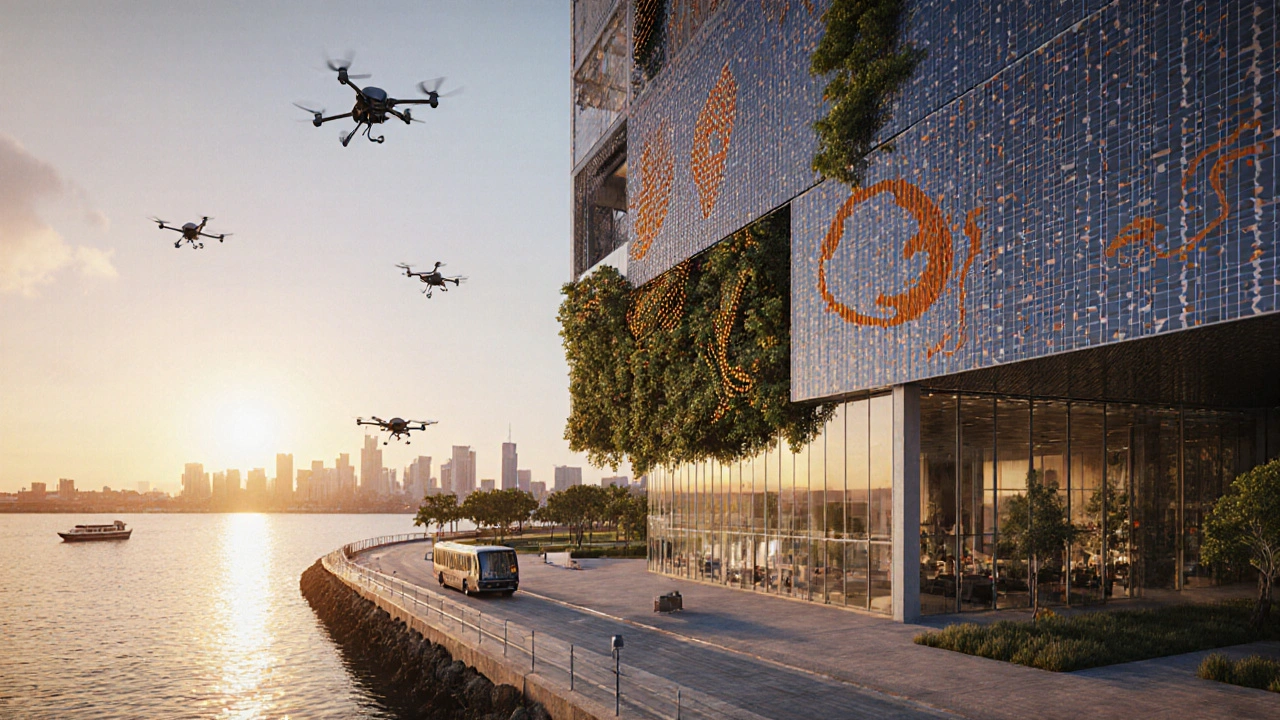Smart Building Technology: Practical Ways to Make Buildings Smarter
Ever walked into an office that seemed to know exactly what you needed? Lights dim when you look away, temperature adjusts as the sun shifts, and energy bills drop dramatically. That isn’t magic – it’s smart building technology at work. In this guide we’ll break down the core tools, show real benefits, and give you quick steps to start using them.
Key Components of Smart Buildings
IoT sensors are the foundation. Small devices monitor temperature, humidity, occupancy, and even air quality. They send data to a central system that decides how to react. For example, a motion sensor in a conference room can turn off lights and HVAC when the room is empty, saving power without anyone having to lift a switch.
Artificial intelligence (AI) takes the raw data and finds patterns. AI can predict peak energy demand and pre‑cool a building during off‑peak hours, reducing strain on the grid. It also learns your habits – if you usually work late on Fridays, the system can keep the lights on a bit longer automatically.
Smart controls like cloud‑based dashboards let building managers see everything in real time. From a tablet you can zoom into any floor, adjust set points, or receive alerts when a sensor detects a problem. The cloud makes it easy to update software, add new devices, or scale the system across multiple sites.
Green design elements such as high‑performance glazing, solar panels, and low‑flow plumbing work hand‑in‑hand with the digital tools. When the system knows how much solar energy is being generated, it can store excess power in batteries or feed it back to the grid.
Real-World Benefits and Examples
Energy savings are the headline number most owners hear. A typical retrofit that adds IoT sensors and AI can cut electricity use by 20‑30 %. That translates to lower bills and a smaller carbon footprint. In a university campus that upgraded three lecture halls, annual savings topped $150,000 while student comfort scores rose.
Comfort isn’t just about temperature. Smart ventilation monitors CO₂ levels and brings fresh air when needed, reducing stuffiness and improving focus. Employees in a tech firm reported fewer sick days after installing air‑quality sensors that trigger air purifiers automatically.
Maintenance becomes predictive rather than reactive. A leak detector can warn you of a pipe failure days before water damage occurs. Facility teams get a ticket in their app, schedule a fix, and avoid costly emergency repairs.
Security also improves. Integrated access control can lock down a floor if an unauthorized badge is used, and cameras linked to AI can flag unusual movement at night. All of this adds layers of safety without extra staff.
Getting started doesn’t require a full‑scale overhaul. Begin with a pilot: choose a single floor or a high‑traffic area, install occupancy sensors, and connect them to an existing BMS (building management system) or a simple cloud platform. Track energy use for a month, compare it to baseline data, and adjust settings. If the pilot shows savings, expand to other zones.
Remember to involve occupants early. A short survey about comfort preferences helps the AI model make better decisions and reduces resistance to change. Transparency builds trust – share the dashboard screenshots showing how the building is saving energy and money.
In short, smart building technology blends sensors, AI, and green design to cut costs, boost comfort, and shrink environmental impact. By starting small, measuring results, and scaling up, you can turn any building into a responsive, efficient space that works for you and the planet.

Future of Federal Architecture: Sustainable, Smart & Inclusive Design
Explore how federal architecture in Australia will evolve with sustainability, smart tech, indigenous influences and net‑zero goals, reshaping public buildings for the next decade.
Read more